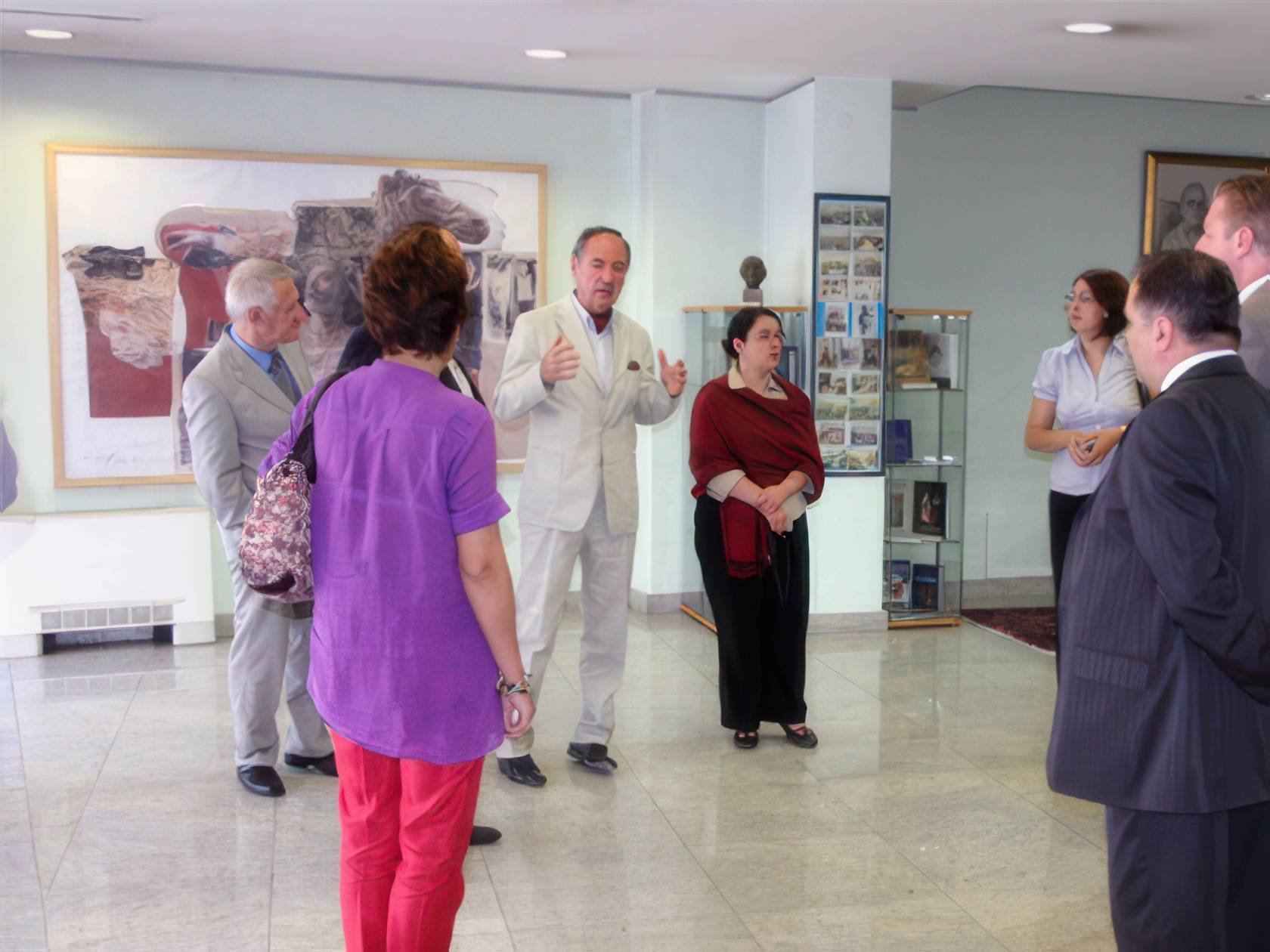
HISTORY

The Bosniak Institute was founded in 1988 in Zurich. Its founder, a prominent Bosnian-Herzegovinian and Bosniak intellectual, politician, and cultural patron, Adil Zulfikarpasic, along with his wife Tatjana Zulfikarpasic, dedicated half a century to collecting, classifying, and systematizing various materials related to Bosnia and Herzegovina, particularly historical, literary, journalistic, manuscript, archival-documentary, artistic, and folkloric treasures.
Their dedicated work and commitment resulted in the realization of the idea to establish the Bosniak Institute with the status of a foundation, an idea that emerged in Adil Zulfikarpasic's early years of emigration and dissidence. From its inception, the Bosniak Institute has aspired to be a center for the development of civic culture and values among the Bosniaks.
By establishing the Bosniak Institute in Zurich in 1988, within the university campus, its founder hoped that one day the conditions would be met to relocate it to Bosnia and Herzegovina. The central focus of the Institute was the library, which at the time contained over 60,000 units and expanded year after year.
The library also housed a Collection of Manuscripts, which today includes over 1,000 codices in various fields, such as law, Islamic sciences, medicine, astrology, astronomy, literature, and other disciplines, dating from the 14th to the 19th century. A particularly significant department of the Bosniak Institute was its Archive, which held documents essential for studying the history of Bosnia and Herzegovina, as well as the former Yugoslavia.
In Zurich, as part of the Institute, the Documentation Center on the War in Bosnia and Herzegovina (1992-1995) was formed, where since then all available materials, printed documents, photographs, videos, and audio recordings related to the aggression on Bosnia and Herzegovina have been collected and cataloged. Additionally, a reference and information library was established, containing dictionaries, encyclopedias, lexicons, almanacs, and atlases, as well as a collection of newspapers and magazines, including numerous publications from informational and professional newspapers and magazines from Bosnia and Herzegovina and neighboring countries.
The Sarajevo branch of the Institute was opened in 1991 and continued its work even during the wartime period. In 1998, Zulfikarpasic made the decision to permanently move the Institute from Zurich to Sarajevo, and in 2000, he officially registered the Bosniak Institute – Adil Zulfikarpasic Foundation in the Ministry of Justice of the Federation of Bosnia and Herzegovina. In May 2001, the Institute was ceremoniously opened in the heart of Sarajevo, at Mula Mustafe Bašeskije Street 21, continuing its work to strengthen Bosniak national consciousness and the Bosnian-Herzegovinian historical and cultural identity, with the goal of informing future generations about the culture, history, and traditions of the Bosniaks and other peoples of Bosnia and Herzegovina. All the collections from the Institute in Zurich (Library, Archive, Cartographic Collection, Art Collection, Ethnological Collection, and other smaller collections) were transferred to Sarajevo, and the Bosniak Institute began a new era of its existence and operation in Bosnia and Herzegovina. The Institute's complex in Sarajevo includes the main building housing all the Institute's collections, an art gallery, research and study rooms, reading rooms, a conference hall, and other supporting facilities, as well as the Gazi Husrev-bey’s Hamam, which serves partly as a museum and art exhibition space and partly as a venue for public events, activities, and programs in the fields of culture, art, and education.
The architectural design of the Bosniak Institute building and the successful restoration of the Gazi Husrev-beg Hamam were carried out by architects Hasan Ćemalović and Ahmet Kapidžić, who received the Sixth of April Award from the City of Sarajevo in 2001 in the Group Award category for this project. The Institute's complex represents a rare and successful fusion of 16th-century Islamic architecture, the Gazi Husrev-beg Hamam, with a new, modern, functional, multipurpose building constructed in the spirit of late 20th-century architectural trends.
Since its establishment in Sarajevo, the Bosniak Institute has received numerous recognitions, plaques, and acknowledgments, including the Charter for Contributions to the Preservation and Restoration of Bosnia and Herzegovina's Cultural-Historical Heritage, awarded by the Minister of Culture and Sports of the Federation of BiH, Salmir Kaplan, in 2013. Other acknowledgments were received from the Association "Education Builds Bosnia and Herzegovina," the Council of Bosniak Intellectuals, the Sarajevo Music Academy, MDD Merhamet, the Bosniak National Council from Novi Pazar, the Waqf Directorate Sarajevo, the Visoko Regional Museum, the General Library of Maglaj, and many others.
-

HISTORY
-

INSTITUTE TODAY
-

MISSION AND VISION
-

BOARD OF DIRECTORS
-

EMPLOYEES
-

RECOGNITIONS
CONTACT
Bosniak Institute - Adil Zulfikarpašić foundation
Mula Mustafe Bašeskije 21
71000 Sarajevo, Bosnia and Herzegovina
+387 33 279 800, +387 33 279 777
info@bosnjackiinstitut.ba
biblioteka@bosnjackiinstitut.ba
BUSINESS HOURS
Monday - Friday
8:00AM - 4:00PM
LIBRARY HOURS
Monday - Friday
9:00AM - 4:00PM
VISITS
Monday - Friday
9:00AM - 4:00PM
GUIDED GROUP VISITS
Announced by phone or e-mail
© 2024 Bosniak Institute, all rights reserved.






















